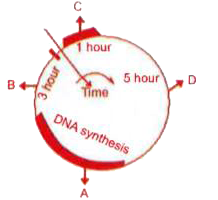Name the important parts involved in creating a pressure gradient between lungs and the atmosphere during normal respiration.
To answer the question regarding the important parts involved in creating a pressure gradient between the lungs and the atmosphere during normal respiration, we can break down the process into several key components:
1. Diaphragm:
- The diaphragm is a dome-shaped muscle located at the base of the thoracic cavity. During inhalation (inspiration), the diaphragm contracts and moves downward, increasing the volume of the thoracic cavity. This action decreases the pressure inside the lungs compared to the atmospheric pressure, allowing air to flow into the lungs.
2. Intercostal Muscles:
- These are the muscles located between the ribs. There are two types: external intercostal muscles and internal intercostal muscles. The external intercostal muscles assist in inhalation by lifting the ribs and expanding the chest cavity, further decreasing the pressure in the lungs. The internal intercostal muscles are more involved in forced exhalation.
3. Pressure Gradient:
- The pressure gradient is created when the pressure inside the lungs becomes lower than the atmospheric pressure during inhalation. This difference in pressure allows air to flow into the lungs. Conversely, during exhalation, the diaphragm relaxes and the intercostal muscles contract, decreasing the volume of the thoracic cavity, which increases the pressure in the lungs and forces air out.
4. Air Movement:
- Air moves from areas of higher pressure (atmosphere) to areas of lower pressure (lungs). During normal respiration, this is essential for the exchange of gases, where oxygen enters the lungs and carbon dioxide is expelled.
Summary:
The important parts involved in creating a pressure gradient during normal respiration are:
- Diaphragm
- Intercostal muscles (external and internal)
- The diaphragm is a dome-shaped muscle located at the base of the thoracic cavity. During inhalation (inspiration), the diaphragm contracts and moves downward, increasing the volume of the thoracic cavity. This action decreases the pressure inside the lungs compared to the atmospheric pressure, allowing air to flow into the lungs.
- These are the muscles located between the ribs. There are two types: external intercostal muscles and internal intercostal muscles. The external intercostal muscles assist in inhalation by lifting the ribs and expanding the chest cavity, further decreasing the pressure in the lungs. The internal intercostal muscles are more involved in forced exhalation.
- The pressure gradient is created when the pressure inside the lungs becomes lower than the atmospheric pressure during inhalation. This difference in pressure allows air to flow into the lungs. Conversely, during exhalation, the diaphragm relaxes and the intercostal muscles contract, decreasing the volume of the thoracic cavity, which increases the pressure in the lungs and forces air out.
- Air moves from areas of higher pressure (atmosphere) to areas of lower pressure (lungs). During normal respiration, this is essential for the exchange of gases, where oxygen enters the lungs and carbon dioxide is expelled.
The important parts involved in creating a pressure gradient during normal respiration are:
- Diaphragm
- Intercostal muscles (external and internal)
Topper's Solved these Questions
- BOOK - NCERT EXEMPLAR ENGLISHCHAPTER - BREATHING AND EXCHANGE OF GASESEXERCISE - SATQ7videos
BREATHING AND EXCHANGE OF GASES
- BOOK - NCERT EXEMPLAR ENGLISHCHAPTER - BREATHING AND EXCHANGE OF GASESEXERCISE - SATQ7videos
BREATHING AND EXCHANGE OF GASES
- BOOK - NCERT EXEMPLAR ENGLISHCHAPTER - Body Fluids and Circulation EXERCISE - LONG ANSWER TYPE Q5videos
Body Fluids and Circulation
- BOOK - NCERT EXEMPLAR ENGLISHCHAPTER - CELL : THE UNIT OF LIFE EXERCISE - Long Answer Type Questions1videos
CELL : THE UNIT OF LIFE
Similar Questions
Knowledge Check
- Question 1 - Select One
Assertion : The abdominal muscles are primarily involved in generating pressure gradient between the lungs and the atmosphere.
Reason : The strength of inspiration and expiration can be increased by abdiminal muscles in diaphragm and intercostal muscles.AIf both assertion and reason are true and reason is the correct explanation of assertionBIf both assertion and reason are true and reason is not the correct explanation of assertionCIf assertion is true but reason is false.DIf both assertion and reason are false. - Question 2 - Select One
The amount of air that enters lungs during normal respiration is :
Atidal volumeBvital capacityCtotal lung capacityDinspiratory capacity - Question 3 - Select One
A partial pressure gradient of oxygen exists between :
Athe atmosphere and the lungsBlungs and metabolically active tissuesCair at sea level and air at high altitudesDall of the above
Negative pressure inside lungs is created due to
View Solution
Name the A,B,C,D parts during cell cycleView SolutionMovement of air into and out of the lungs is carried out by a creating____ between the lungs and atmosphere.
View SolutionFill up the blanks in the following paragraph by selecting the correct option.
The movement of air into and out of the lungs is carried out by creating a (i).____ between the lungs and the atmosphere. Inspiration can occur if intra-pulmonary pressure is (ii).____ Expiration takes place when the intra-pulmonary pressure is (iii).____ than the atmospheric pressure. Expiration takes place when the intra-inspiration is initiated by the (iv).____ of diaphragm which (v).____the volume of thoracic chamber in the antero-posterior axis.View SolutionAsertiion : Inspirations occurs when there is a negative pressure in the lungs with respect to the atmospheric pressure.
Reason : During inspiration, a decrease in pulmonary volume increases the intre-pulmonary pressure than atmospheric pressure which forces the air from outside to moe into the lungs.View Solution

